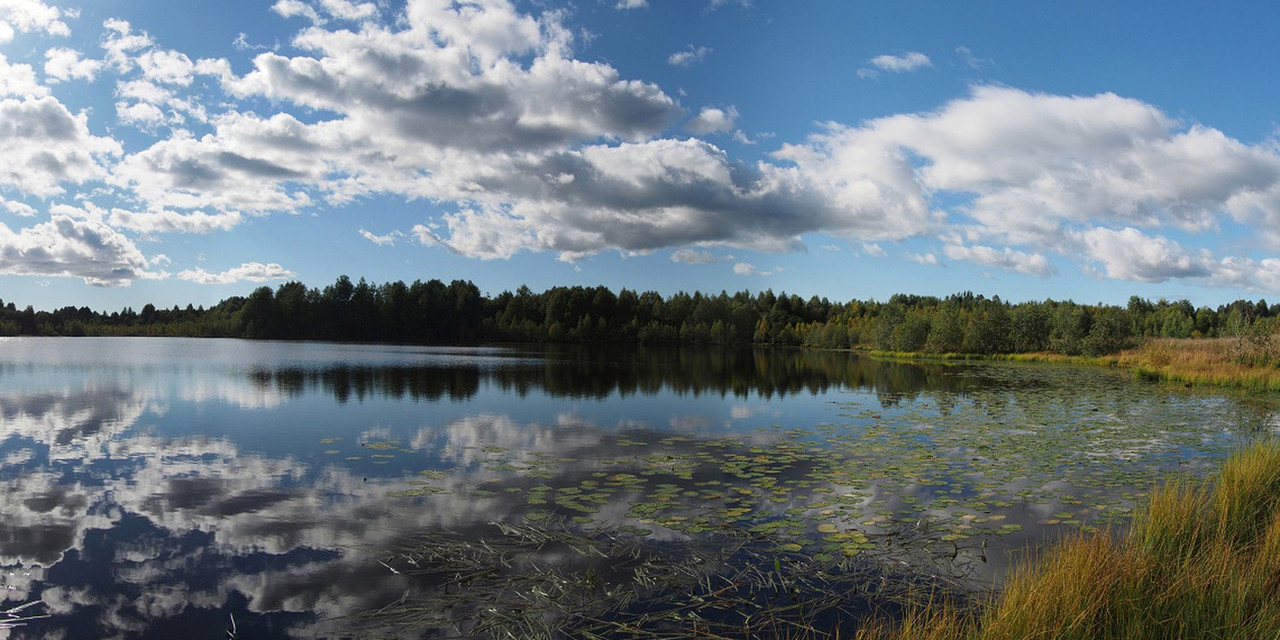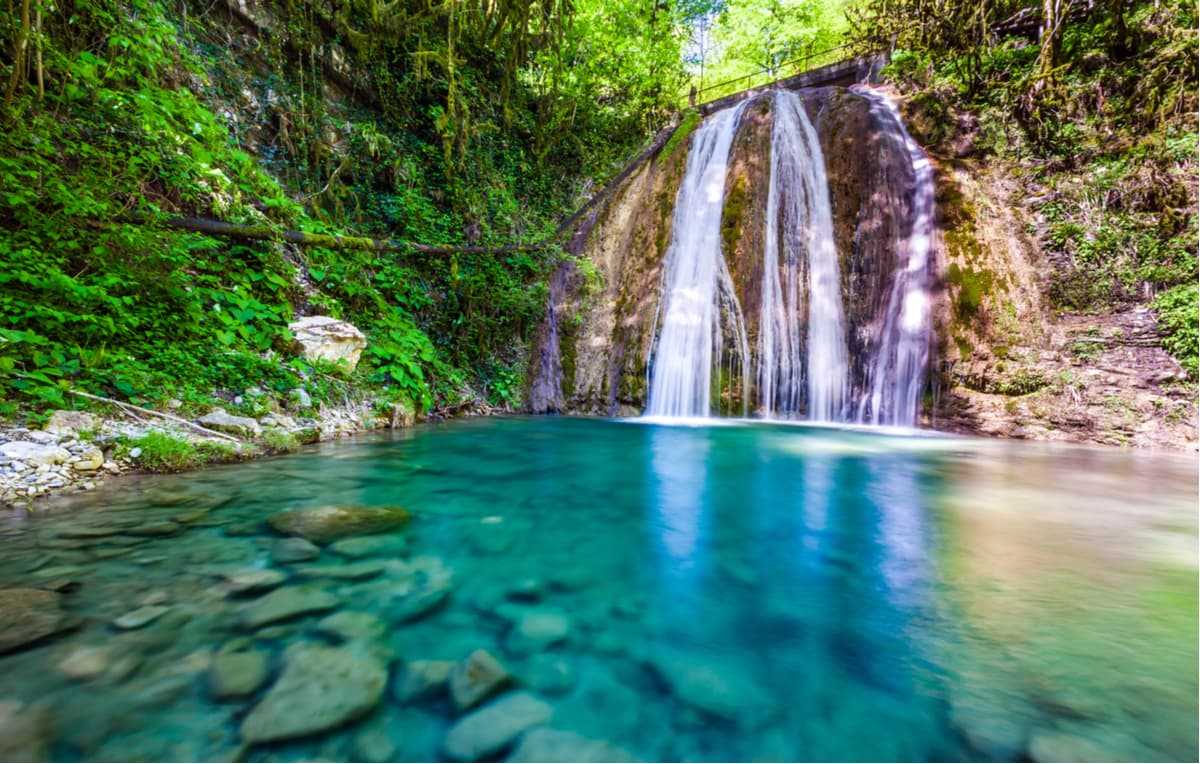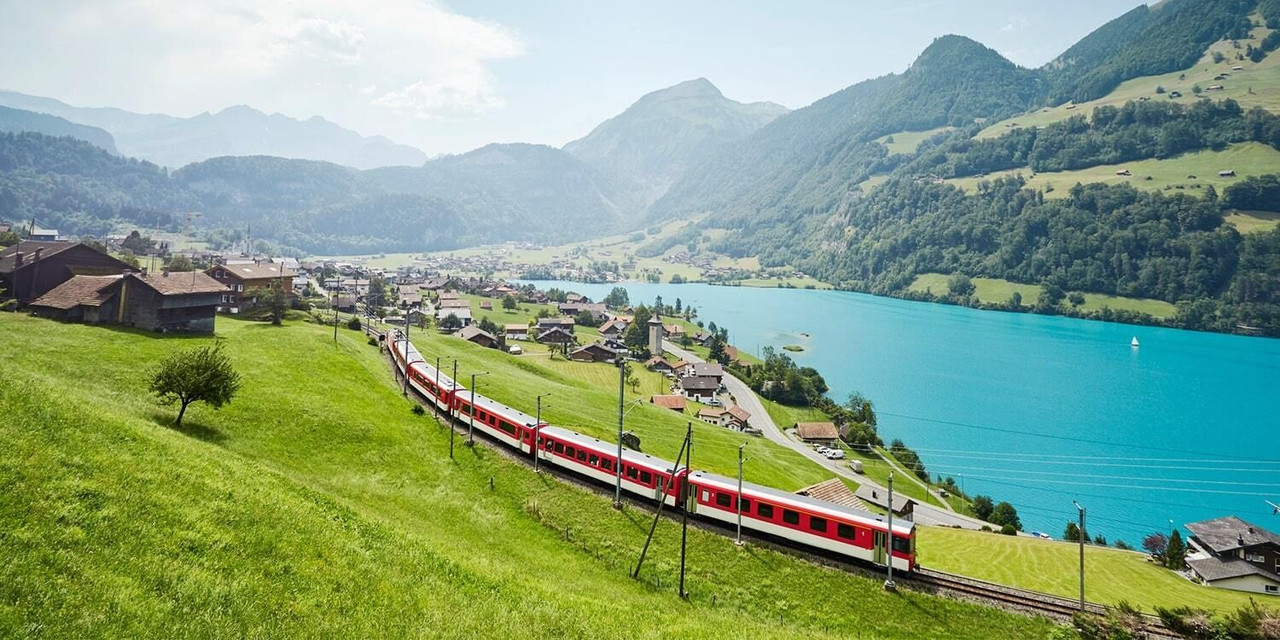Resorts can go hand in hand with wildlife and even be beneficial, experts say
Today, Russia’s protected areas and conservation areas make up as much as 13 percent of the country’s vast territory. Ecotourism is rapidly growing, contributing in turn to the growth of Russia’s green economy as one of the country’s latest trends. Meanwhile, eco activists what we say throw sand in the wheels of the national tourism on occasions, putting obstacles for the resort areas as they grow in natural territories. Experts strongly believe, however, that such “environmental protection” is untrue at times, and resorts can coexist happily with wildlife without any harm to it and even doing some good for it.
The green economy and eco-tourism growth are trending, so what are the odds?
Green economy is turning into a trend these days. Some reports suggest that Q3 2020 saw an all-time high in green bonds (debt securities that are issued to attract investment in projects aimed at green improvements) issued for around US$65 billion. Moody’s estimates that the total of green, social and sustainable bonds issued could reach US$400 billion in 2020.
Environmental protection has been a trend as of late. This accounts for the fact that businesses are taking steps to get their projects into the “green” category. The Government of the Russian Federation has issued Order No. 3024-r to promote green finance measures; this topic has been put into paragraph 5 of the National Economic Recovery Plan for Russia.
Photo by Artur Demchenko (“Recreation in Russia”)
Ecologically active people also take advantage of the situation, trying to fit any environmentalist struggle they might pursue into the mainstream. This struggle turns occasionally into a real way of putting pressure on the decisions the Russian authorities or business make, even in the way of upgrading local territories, national parks, and fostering tourism. Indeed, even the country’s President Vladimir Putin, losing his temper, spoke out on this point at the end of 2020: “I, for example, am constantly challenged by various sides of this process while at the table. Some say that we should enlarge the number of these territories, and that we should not change or disturb anything there. The others overseas say: “They can do anything they like for the sake of economic activity. Nothing is allowed for us. They also push this idea here saying that we are not allowed to do anything like create new ski resorts or bring lands into economic turnover. Even if we ensure that additional territories adjacent to specially protected areas are restored, even if, let’s say, we do plant some trees which we later take down when laying certain routes, highways, or linear objects or infrastructures: “We are not allowed anything, this is done so as to keep our development out of the way.”
Greenpeace, for example, has been high-temperature attacking Russia’s bill to amend the Federal Law on Specially Protected Natural Areas (SPNA) for all of the past year. However, it was vital for the country in terms of making economic and social advances in SPNAs: after all, there are settlements whose inhabitants could not make full use of their territory, and various domestic tourism facilities.
Just before the new year 2021, the head of state signed this bill into law; eco-activists have failed to thwart the situation. For the Russian economy, and for nature as well, this is clearly a big plus: our natural areas must, on the one hand, still pursue the valuable mission of protecting ecology, flora and greenery, and, on the other hand, they must see greater development towards educational targets, protecting public health, and boosting the tourism dimension across Russia.
“It is increasingly imperative and timely for us to follow the green agenda,” says Arkady Amelin, Vice President of Investment Russia, member of the Russian Chamber of Commerce and Industry’s Council on Financial, Industrial and Investment Policy and head of the Investment, PPP and Infrastructure Committee of the Eurasian Assembly of Nations. – Let’s get to the bottom of the meanings behind this requirement, however. For one thing, any person of healthy views would agree with the self-evident paradigm that nature must be protected. All of us want to breathe crystal-clear air, eat healthy natural foods, enjoy relaxing and living in harmony in undisturbed natural areas. Passing on our environment as pristine and unspoilt as possible to future generations is something we would like to do. On the other hand, the environmentalists are over-zealous on occasions when it comes to their environmental fighting mission. We are all aware that, sadly, the rapid industrial advances in the recent history of mankind driven by technological innovation have been accompanied by, at times, some out-of-control pollution of nature. Mankind has now seen the mistakes it has made, and is seeking to rectify the state of affairs. For example, Russia is implementing the Ecology national project, whereby 4 trillion rubles have been allocated to finance priority ‘green’ activities until 2024, with 80% of this amount to be raised from non-budgetary sources,” said the expert.
“The issue is not the toilets, it’s the heads”
Russian journalist Vasily Peskov once said that any trip to see nature, and especially to meet a wild animal “is an unforgettable experience and sometimes the most memorable one”, stressing the importance of ecotourism and the development of tourism in the national parks and giving reasons for the need to develop infrastructure: ”It’s really good to compare protected areas with open-air museums. In each case there are specialists of fundamentally similar professions; in museums these are technical staff, security guards, curators, guides, art historians, restorers. They both have similar rules for visitors. The issue is not the toilets, it’s the heads!”
Overseas public authorities, for instance, strongly support the development of national parks as destinations for tourists and the development of ecotourism, among other things. Furthermore, national parks in the USA, for example, contribute significantly to the country’s budget. Facilitating the eco-tourism growth there is seen as an important duty to be taken on by the regional authorities. In Russia, on the other hand, it has so far been thought that wilderness needs to be hidden and closed off from any visit; this idea has been echoed and promoted so enthusiastically by the “greenies”, including Greenpeace. As a result, Russia’s vast national park areas do not generate income but they rather require large investments, such as for environmental protection measures. Ecotourism and the development of eco-friendly resorts in such areas can, indeed, also lead to the income generated, and the money raised can be invested in environmental protection as well.
Photo by Artur Demchenko (“Recreation in Russia”)
By the way, according to the same World Wide Fund for Nature (WWF), in Canada, for example, direct tax deductions from ecotourism activities are five times higher than all the country’s environmental protection expenditures. What’s more, ecotourism in our domestic protected areas is over 1000 (!) times less than the annual income from American protected areas. Or even hundreds of times less than the income of protected areas in lots of developing countries.
At the same time, Russian citizens do not even have a place to admire wildlife. Such places have only begun to gradually develop in recent years, overcoming the relentless “raids” by the Greenpeace environmentalists.
Andrei Nagibin, the author of the term “environmental extremism” and head of Green Patrol, noted long ago that this phenomenon had arrived in politics and economics of the countries for a long time, as it was based on “public opinion that various crooks do not hesitate to manipulate”. Environmental protests are a weapon in competitors’ wars and, under plausible pretexts for protecting nature, various ‘green’ organizations, it has to be admitted, often act to order.
Caring for tourists and preserving nature are the main goals of today’s resorts
The authorities, the public and the business community have all come to realize that specially protected natural areas must be made part of the tourist context. Likewise, the management of nature reserves and national parks must have the rights and opportunities to develop tourism in their territories. This should make the development of domestic tourism in such areas civilized and cautious, paying attention to both nature conservation and care for tourists.
Russia does have such places that these essential goals have been remarkably well aligned. Again, their creators have had to fight off claims by Greenpeace and other eco-activists who interfered with the projects being set up or fought “against the harm caused to nature” in whatever way they could, up to and including rallies and demonstrations.
Photo by Artur Demchenko (“Recreation in Russia”)
An example of successful development of domestic tourism in the Volga region is the popular Khvalynsky ski resort. The project was created on the territory almost adjacent to the vast Khvalynsky national park. What difficulties the investors from a small town had to fight for the project, prove its viability and the need to use recreational opportunities of the local area not to the harm to the nature, but rather for its benefit is already forgotten. The active recreation among the Hvalynsky chalk mountains covered with relict pine trees is now loved not just by Volga residents, but also by guests from Penza, Moscow and Kazakhstan. The ski park, the hotel complex, thermae and the baths have been designed with the environment in mind. The owners of the facility are proud of “not a single animal or tree suffered” (a phrase much favored in the cinematograph) as the infrastructure facilities were built.
Notably, the Khvalynsky ski resort created in early noughties gave a huge impetus towards development of the National Park and the region as a whole, and inspired creation of jobs. New modern eco-trails, museums and excursion routes appeared. An inflow of tourists brought about an upswing in prices for land and real estate.
“A green tourist cluster is now being actively formed in Khvalynsk, on the banks of the Volga River,” says Arkady Amelin. “Why go far? Everyone has heard of the Rosasa Khutor resort, a large-scale project that has acted so well in recent years to boost the development of local areas.
Photo by Artur Demchenko (“Recreation in Russia”)
The founders of Rosa Khutor once claimed that the resort would attract 50% of tourists as a ski or mountain resort and 50% more as a launching point for eco-tourists. Rosa Khutor’s director of Sustainability and Environmental Protection, Dmitry Kolosov, said the resort’s sustainable development program, which includes a wide range of environmental initiatives, had been unveiled here in 2018.
“The priority is to create the conditions for nature tourism at the resort and expand opportunities for safe and comfortable access to the alluring but challenging world of the mountains,” explains Dmitry Kolosov.
A network of eco-trails is being developed here by joint efforts with the directorate of the Sochi National Park. Incidentally, one of these trails served as the basis for the trail race under the Rosa Run competition.
The resort aims to restore the lost heritage of Soviet times, in which active tourism was a truly massive phenomenon, and to do this side by side with the Sochi National Park and the Caucasian Biosphere Reserve. They also put a lot of emphasis on raising awareness for tourists of all ages. The resort takes care of the populations and habitats of rare plants and animals, and even relocates rare plants from work sites.
Notably, the resorts do not fail to comply with environmental laws, which the Greens have tried to reproach such projects for. Just one example. A tree once fell at the Rosa Khutor resort, damaging a ropeway. This was precisely because of the strict adherence to the law: no trees in the ski resort are allowed to be cut down.
Rosa Khutor was built with the utmost respect for the environment at all times. 25,800 young chestnut trees were planted here in 2012, for example, to replace those cut down on the 50-hectare site. Plants listed in the Red Book of Russia were replanted from the construction site, while rare species of toads and lizards were relocated. Specifically, about 800 plants of three rare species were relocated while preparing for the construction work; but first the permission of the Federal Service for the Supervision of Natural Resources was secured.
Photo by Artur Demchenko (“Recreation in Russia”)
Arkady Amelin underlines that the environmental agenda is beginning to play a significant role in the future of domestic tourism. The results of the autumn 2020 competition for grants from the federal budget to support public and entrepreneurial incentives aimed at developing domestic and inbound tourism also attest to this.
“I had to sit on the competition committee,” said the expert. “The competition was held by the Federal Tourism Agency (Rosturizm). More than 4,000 applications from all over the country were reviewed and 474 winners were decided. Most of all applications were aimed at creating comfortable and safe conditions for outdoor recreation. In my line of work, I often have to go on business trips and have seen with my own eyes the level of responsibility that many project initiators feel, the care they take for nature when developing business initiatives for various tourism events.”
What is more, says Arkady Amelin, it is not uncommon to witness situations where entrepreneurs do literally save nature on their own initiative and at their own expense. There are plenty of examples of this. One of them is Chelsea Group, the Bureau of Good Deeds Foundation; they have been making efforts to improve the natural areas of Votkinsk in Udmurtia for a few years now. The embankment is being renovated, the bank is being reinforced, wastewater is being filtered, ponds are being deepened and cleaned, the forest is being cleared of rubbish and weeds, ski trails, “health trails” are being lit, bicycle paths and walking areas are being put in place. In part, this was done using funds from private investors. Noteworthy, the Ministry of Natural Resources and Environment consulted entrepreneurs. A consensus with public environmentalists meant that all the work could be done quickly, rather than stretching it out for decades to come.
“The country needs an environmental information law,” the expert concludes.” “The first problem the ‘eco-terrorists’ avail themselves of is the lack of it.”
A similar idea is expressed by Nikolay Nikolaev, chairman of the Duma’s Committee on Natural Resources and Land Relations: “The public is not told what is really happening to the environment and whether or not it is happening when a facility is built,” he says. “Nor should we forget that, for the most part, the organizations behind many eco-protests are foreign-funded ones. Their task is not to solve issues in a meaningful way, but to keep the solutions at bay. This is why we must actively develop our public environmental organizations. Support them and raise their profile,” the parliamentarian summarized.
Karen AGABABYAN






